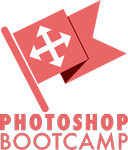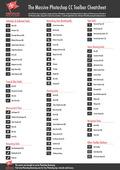What Is this Graphic Design you speak of?
In the first part of a new series on graphic design for new designers or non-designers (basically anyone who’s interested in learning more about design for use in their own promotional materials), we’ll have a look at what graphic design is. We’ll see some examples of the elements and principles of design that you can use and apply in your own designs to improve them. These principles can be applied whether you’re using a professional graphics package like Photoshop or InDesign OR if you’re using Word or Pages to create a report. Good design is good design, regardless of which tools you use.
Graphic design can be defined as the “art or profession of visual communication that combines images, words and ideas to convey information to an audience. ”
Design Elements
A graphic designer takes a number of elements and combines them in an aesthetically pleasing way. The designer needs to think about the different types of media that are required and what is the best way to convey the message or idea. For example, the designer may need to arrange photos, text, colours, logos so that they can be understood on a cardboard package and on a website and a poster. Each piece of media will need its own treatment but the designer will use their skills to tie it altogether so the design is consistent across them all.
It’s important to note the following :
Photoshop is NOT Graphic Design
Illustrator is NOT Graphic Design
InDesign is NOT Graphic Design
These are simply the tools that we, as designers use to create the designs. Owning a copy of any of these apps (or similar) does not a designer make 🙂
Where can you see graphic design?
Quite literally from the moment you get up in the morning until you go to bed in the evening, you are surrounded by graphic design. The packaging on your shampoo bottle in the shower, the box that holds your cereal, your online (or offline) newspaper, the logo on your car, the timetable for the train, the cover of the book you’re reading… The list goes on and on and every single one of these items has been designed by someone, with the view to providing information about the product.
Designers achieve their goals by utilizing the elements and principles of graphic design. So what are these elements and principles of graphic design?
Elements of Graphic Design
The main elements a designer works with in order to produce a beautiful, eye-catching and importantly, a functional design are:
1. Photography, Illustration, Art
As the old saying goes, “A picture can tell a thousand words” so it’s no wonder that photos, illustrations and art are such powerful elements in design. Our eyes are drawn to images and we can absorb more from an image in a matter of seconds than in the time it would take to read the words describing that image. The choice of image is important because it can make or break the design. One large image can also do the heavy-lifting of carrying a design so much better than lots of little images. A common mistake I see with my students who are new to design is to use lots of little small images and place them “willy-nilly” across the page. This is a sure-fire way to make your design look amateurish. So aim for one large image to tell the story.
Vogue Australia Cover. The beautiful photograph does most of the work in this design. The concept is re-enforced with the headline and text. Copyright Vogue Australia.
2. Lines
Designers use line to direct the eye, create forms and to separate and divide information and space. We frequently see lines used on websites to separate menus from main content and in magazines and newspapers to divide space. Lines can be solid, dotted, hand-drawn, zig-zaged and curved.
Lines in the Mast Head of High Five are used to separate and organise information. Copyright Whitney
3. Color
Color is another strong element of design. It can be used to evoke emotion, to highlight a block of text or to make an image stand out. One simple use of color that many of us see every day is to show a link on a website. Color theory is an entire subject in itself and one that I’ll cover on another day.
One of these kids is doing his own thing! On the left I’ve changed the colour of two well known logos and something is just not quite right. The logos are of course still recognisable but the colours we have come to associate with them are way off.
4. Shapes
Shapes are a fundamental part of all design work. We use shapes to create patterns, to form layouts and as building blocks for more complex shapes. If you look at almost any logo, you will see it is created from a set of basic shapes. Look at most websites. They are generally formed by a series of rectangles - websites are basically square or rectangular shaped boxes holding information.
The backgrounds on the pages of this weather app consist of simple shapes combined to create recognisable forms. Copyright Disky Chairiandri
5. Texture
When we talk about texture in design, we are referring both to:
- the tactile nature or the surface of a design, for example a rough paper or cardboard in print design, and also to the visual appearance of a design
- rich graphics that create the appearance of a texture.
Adding texture to designs can evoke a feeling not experienced with a super-clean non-tactile design. We can create the appearance of age layering scans of old paper or by actually printing onto paper that looks old and using print methods which produce “imperfect” results, or by scanning in elements creating by hand and adding them to our designs.
This beautiful poster for Minneapolis College of Art and Design features thick dabs of paint on a white painted wall. Copyright MCAD.
6. Type
Last on our list of graphic design elements is Type. It is fair to say that type is absolute essential in our design work and the element that designers will work most with. We want to avoid randomly placing the type on the page, trying to fill every space with either text of an image, but rather to make definite choices about where the type will go, its size, color, choice of fonts, spacing and alignment. As well as “just being words”, we can create type in such a way that it becomes an image or a shape or a color or even a texture. Type is such an important and versatile element of design.
This beautiful chocolate packaging for Cocoa Colony uses meticulous typography and gold print to achieve a feeling of luxury. Designed by Jasmine Lee for Cocoa Colony
That completes the overview of the Elements that go into making a graphic design piece. Your design may include a few or possibly all of these elements. In the next post in this series, I’ll show you the Principles of Design that we can apply to make our work look beautiful and professional.
If you have any questions about Photoshop or Design, please feel free to contact me and I’ll do my best to answer your questions.
I would be super grateful if you would share this post. Thank you very much! 🙂
Get A Free Printable Photoshop Toolbar Cheatsheet
Subscribe now to get a free printable poster showing all of the Photoshop tools and their keyboard shortcut.
Hello!
My name is Jennifer Farley. I’m an illustrator, designer, author and design teacher based in Ireland. I’ve been teaching and working in the design field for over 15 years and I help people learn Adobe Photoshop, Lightroom, Illustrator and Graphic Design.
Photoshop Bootcamp is a growing collection of my Photoshop tutorials and lessons I’ve written for my students.



